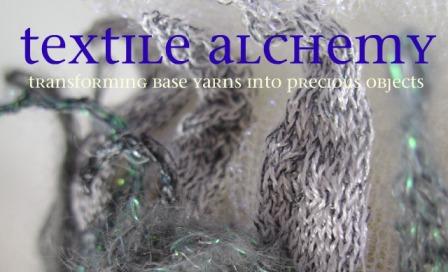Here is the next installment in the Skipton Embroiderers' Guild Travelling Book project. The theme for this project was Renaissance and in particular the cloth of Italian Renaissance courtiers.
At around the same time that I was researching this theme, my daughter introduced me to a book: Renaissance Clothing and the Materials of Memory (Jones & Stallybrass 2001). The book describes how clothes were passed from master to servant, friend to friend and lover to lover. In this way, argue the authors, the memories associated with the material are transmitted. I loved this idea of 'ghosts of owners past' and wanted to incorporate it in my piece.
Thinking about what kind of things might be passed on, and mindful that I could only reproduce a small item or fragment for the book, I remembered that pockets were detatchable items before the 17th Century. Italian saccoccias (pockets) were beautifully decorated items. I made my scale model saccoccia out of devore printed velvet and discharge printed silk because the two processes leave a kind of ghostly image - a memory of a previous owner. The fabric was designed, dyed and printed by my daughter for her A-level art course which gave it particular significance to me. I hand-stitched a motif from a 16th Century fragment of Italian silk velvet using gold coloured thread, another memory if you will.
Finally I wondered what one might keep in a pocket. My inspiration came from the phrase 'born with a silver spoon in her mouth'. Prior to the introduction of place settings, people carried their own spoon with them to table. For land-owing classes this was often a silver spoon. In Medieval times, such people were craftsmen or farmers who frequently had dirty hands. Not wanting to be mistaken for a serf, the silver spoon became a mark of wealth and used as a passport or credit card might be used today.
I made a silver spoon using machine embroidery on disolvable fabric. Once the plastic film had dissolved, I gently shaped the work into a curved bowl and rounded handle.
By way of explaining my work in the Travelling Book, used a paper-chain of ladies to illustrate the transmission of memories with the saccoccia.
Wednesday, 12 April 2017
Straight Stitch Architecture
After a few weeks of meticulous stitching I decided to give my Haworth Stitch Group a slightly different challenge; to create a picture sewn in straight lines.
I was inspired by a project from HoopLa magazine which showed a London cityscape, drawn with long single stitches and punctuated with small spots of coloured fabric. Some of the group chose favourite cities and some chose this charming illustration of Dutch houses. The pictures are postcard size and the pieces of fabric are teeny-tiny. The 'drawing' was worked in thick top-stitch or button thread using elongated back-stitch.
I quiet like the discipline of straight black lines and can see other projects that might include this technique.
Subscribe to:
Posts (Atom)



